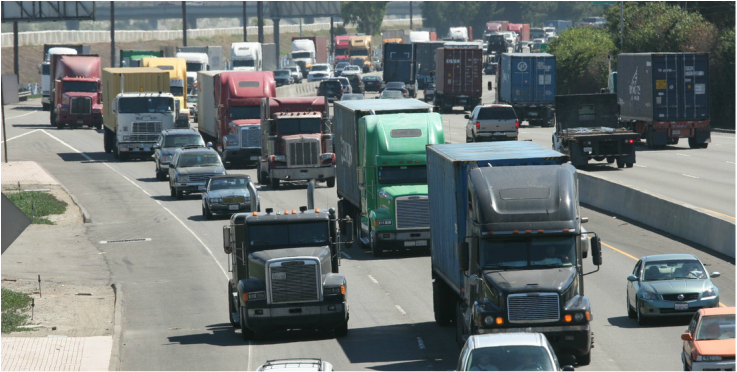The year was 2006. While the rest of the world was paying attention to the hit song “Crazy” by St. Elsewhere, the World Cup, and the world’s first 6,000-container capacity ship (the Regina Maersk), we were celebrating something big in the air quality world. The San Pedro Bay Ports – the Ports of Los Angeles and Long Beach – had put out their Clean Air Action Plan (CAAP), a first-of-its-kind roadmap for emissions reductions.
What has changed in the last 10 years? This year’s top of the charts song is “One Dance” by Canadian singer Drake, the Olympics where held in Brazil, and the largest container capacity ship, the Benjamin Franklin, can now carry up 18,000 containers – three times the number of containers as its largest predecessor.
What about the ports? What’s different there? The San Pedro Bay ports have released the CAAP 3.0. This new and improved version has even more first of its kind commitments towards zero emissions.
The deadlines set by the CAAP 3.0 are looking to meet 2030 deadlines for cargo equipment and 2035 deadline for trucks to be zero emissions. Conversations between the Ports and grassroots environmental justice advocates have been critical for these benchmarks. Advocates have been asking for the turnover of freight equipment to zero emissions where technology is currently available and wherever feasible.
While we at the Coalition for Clean Air (CCA) are glad to see the plan move forward, there is still much that needs to be done. There is a lot to be said for the cleaner technologies, but we think the plan is lacking in the 2035 zero-emission commitment. It lacks credibility and certainty because the Ports do not identify the specific criteria they will use to assess “feasibility.”
CCA is working with a number of organizations to message that more can be done and it needs to be done faster. Thus, we were happy to hear statements from Long Beach Mayor Robert Garcia and the Los Angeles Mayor to consider moving the CAAP faster.
The planning that can be demonstrated at both these ports can signal a change to the industry, and change the lives of millions of residents that are impacted by the goods movement sector each day. More importantly, by affecting policy, we can ensure that no other community has to fight the same battle. We as a coalition work with many of the state agencies that can plan for policy and investments that can pave the way to a more sustainable transportation system.
From the terminals operations to the trucks and the way in which we fuel, there is opportunity with the CAAP to reduce toxic exposures to communities, especially diesel particulate matter and NOx, which continue to compromise our health, resulting in respiratory illnesses, cancer and premature death. It’s important to note that:
- Unfortunately, race and class are the extremely reliable indicators of where you might find more of the good stuff, like trees and parks, and the bad stuff, like unhealthy air and toxicity. Poor people are not only still poor, they are unhealthy.
- Children living in communities with higher NOx levels have 10% slower lung growth.
- 1 in 7 kids in LA has asthma, and we all pay dearly for health problems associated with air pollution.
- Low-income citizens often use ER visits as primary care.
Right now there is more opportunity to make a significant impact in the communities who bare the biggest burden, which also are low-income communities of color fighting for clean air. Federal air quality targets, the state’s greenhouse gas reduction targets and transportation electrification targets, combined with the goals of the CAAP and the state’s Sustainable Freight Action Plan, make the Ports a favorable place to launch zero-emission medium- and heavy-duty transportation technologies. The CAAP must be bold and specific about its vision, and this is the time to do it.
The time to make the Ports zero emission is now. Residents are asking for change. Advocates are demanding it. Businesses are ready. We must keep moving forward.
